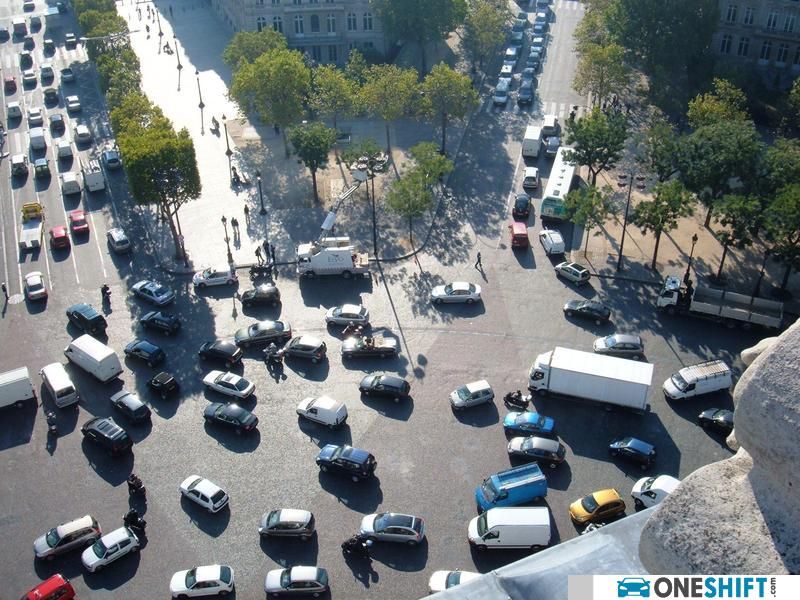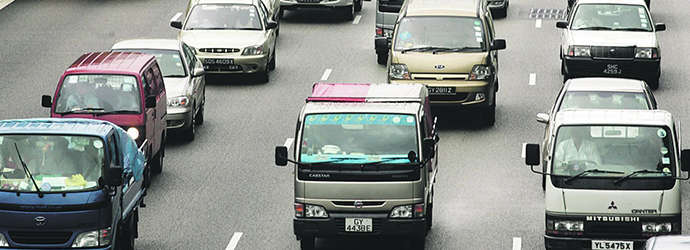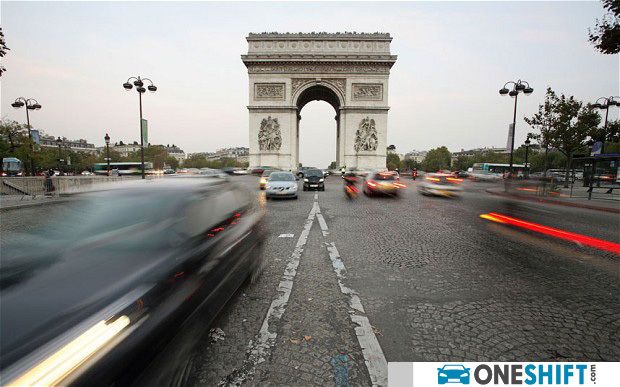Eight Wheels and Counting
Lessons we can learn from the French about driving and other modes of transport.


Arc de Triomphe
Have you been to Paris recently? All the cars there have loads of small dents, a generous sprinkling of paintwork scrapes and a driver honking his/her horn while driving.
But here’s the thing – despite the Arc de Triomphe circuit seeming a bit like Sepang on F1 weekend, despite the frenzied lane changing, there seems to be contradictory lack of high speed big-damage smashes in Paris.
How often per day do you see a serious three-car pile-up in France’s capital? Probably not as often as on the PIE. According to recent World Health organisation figures (admittedly a few years old), France has a rate of 4.9 road fatalities per 100,000 inhabitants, and 8.5 fatalities per 100,000 vehicles. Singapore's figures come in at a shocking 5.1 and 27.4 respectively. An eye-opener? It shouldn't be.

Accident in Singapore (source: AsiaOne)
I drive a car. I also ride a motorbike and I ride a bicycle. I do all three, several times, every week and in the process get to see a lot of driving styles.
I ride my bicycle along the Park Connectors and down North Bridge Road during rush hour, or to go to the cinema. I ride my motorbike on the ECP to IKEA for nice foam pillows and some meatballs, as well as to Malaysia at weekends to blow the cobwebs away on the road to Mersing.

And I drive a car everywhere around Singapore to carry people, transport bulky stuff, keep dry when it’s raining, and to be able to have a chat with my partner while we are driving.
Each method of transport has its unique advantages. And most important, each form of transport has its own lessons.
On a bicycle, you check well ahead and look behind before turning. If you don’t, you get squashed by a bus.
On a motorbike, you constantly scan the road for spilled oil, diesel or gravel. If you don’t, you risk a skid at best, a serious crash at worst.
In a car, you keep an eye on the vehicle next to you, behind you, in front as the amount of road space between lanes is sometimes wafer thin.

Singapore traffic
But the experience of doing all that riding on a bicycle, riding on a motorbike and driving a car regularly allows helps me think outside my box. I can apply the bicycle and motorbike lessons and techniques to driving a car. Which like the French (and here that intro might start to make sense) could help make me a bit less likely to have an accident.
I won't say, despite the WHO figures, that the standard of car driving in Singapore is bad. But I would say it is limited. Drivers in Protons, Nissan Diesel tipper trucks, Ferraris and private buses mostly have one thing in common: they have very rarely used the road in any other type (not make) of vehicle than the one they are driving.
Contrast that with the French. They start off riding a bicycle (Tour de France culture and all that) on slippery country roads with mum, dad and the aunties from the age of five. Then they taste individual freedom to go to the next village or town on a moped or scooter from the age of 15. Then, eventually, they get to drive a car when they are 18 - but only if previously accompanied by an adult and when they have clocked up some 3,500 accompanied kilometres.
All this means the average car driver in Paris looks out for, sees, is aware of and understands the unique demands of the cyclists, moped riders, motorcyclists and other cars they are sharing the road with. They can also apply the techniques and rules they have formulated going from a bike to a scooter to a car in a way that transcends just pressing pedals and turning a wheel. They can get inside the mind of other road users - because they have been there.

Paris (Souce:The Telegraph, UK)
Just imagine if you were driving, and you noticed a cyclist coming up the inside lane to a set of red traffic lights. You pull slightly to the right to allow him to pass on your left - you know he will be happy to avoid the broken glass in the gutter. He thinks you are great, and waves thanks. You get a warm glow.
Just imagine, a motorcyclist comes round the corner towards you on the wrong side - he has swerved to avoid a plank in the road that could have easily thrown him off (but that you drive comfortably over in a car). You pull over to the left, slow and give him safety space. He sighs in relief and slow down for the next bend.
In both cases the rider could have been an idiot pushing just a bit too hard - but then again, maybe not. Being in the right according to the road rules is of little comfort from a hospital bed.
So let's all take a lesson from the French. Lets stick to dings and scrapes instead of major "I had the right of way" smashes that benefit nobody.
PS - I am not French.
Credits: Story and Photos by Jeremy Torr


Get the Best Price for your used car
from 500+ dealers in 24 hours

- Convenient and Hassle-Free
- Consumer Protection
Transparent Process
With No Obligation








